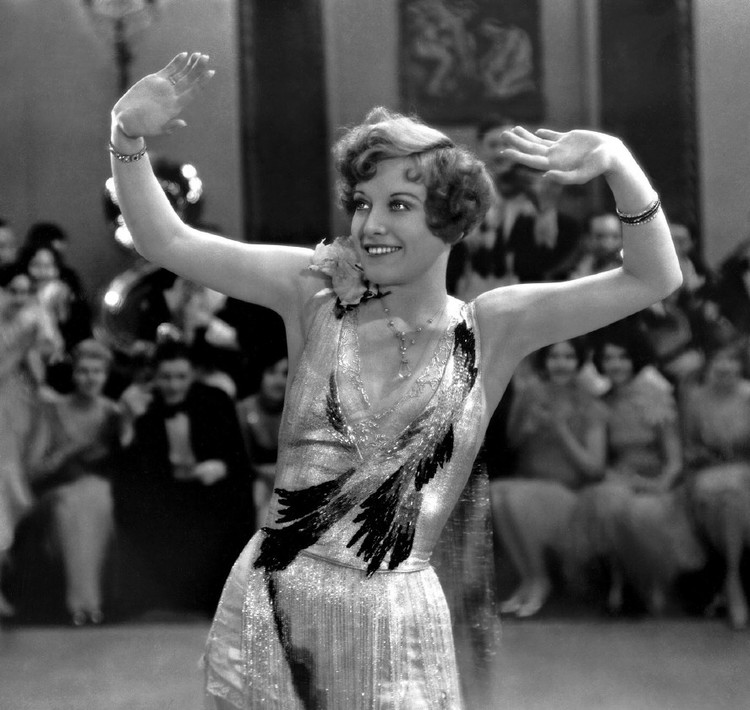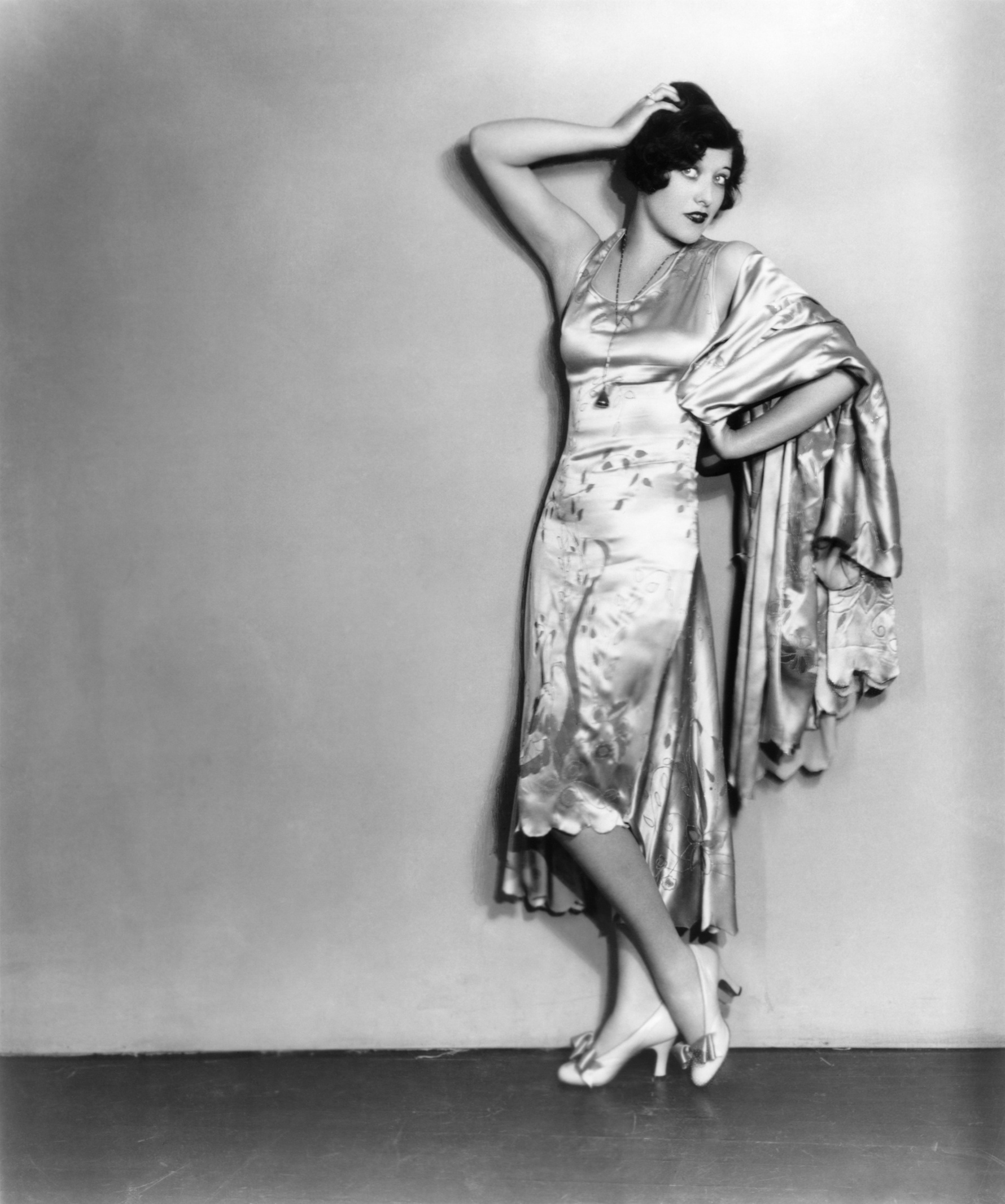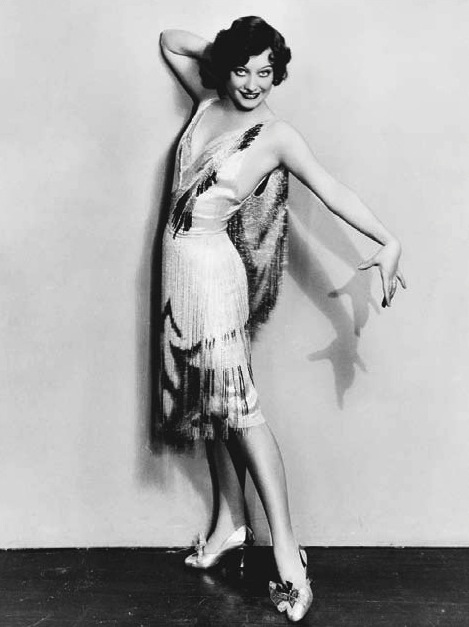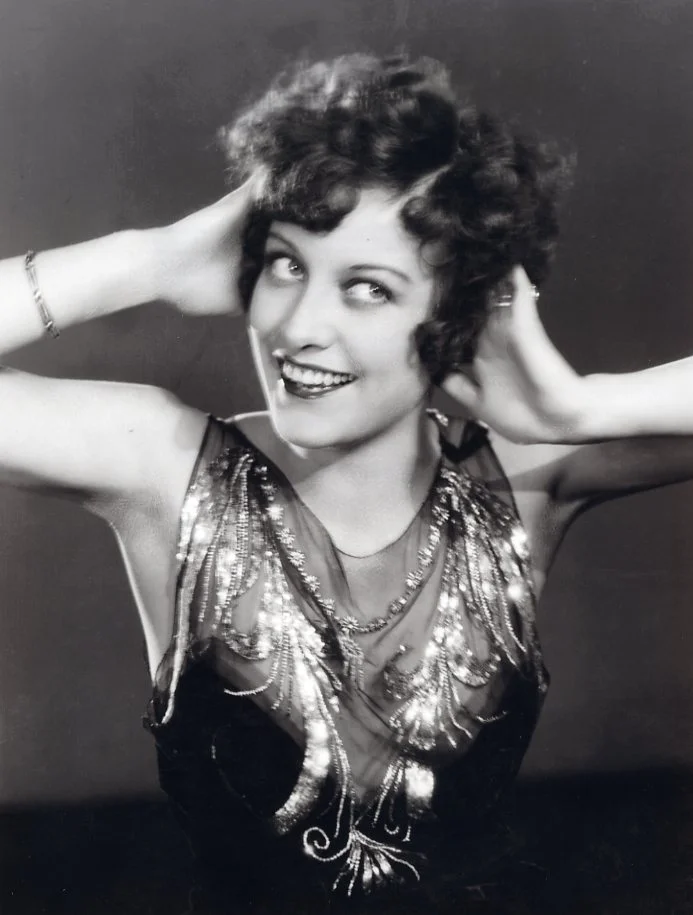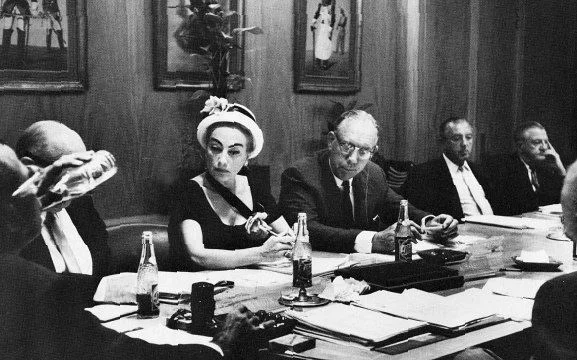Star Signature Spotlight: Joan Crawford
Joan Crawford's signature from Joseff's studio guest book dated January 9, 1946
Born Lucille Fay LeSueur, Joan grew up with her mother Anna Bell Johnson and stepfather Henry Cassin, who ran the Ramsey Opera House, and whom her mother married shortly after her birth. As a child, and for some of her performing career, she was known as Billie Cassin, and enjoyed watching the shows at his theater. Joan expeienced a generally tumultuous childhood, including several reports of abuse and neglect by her stepfather.
Like much of her life, even Joan Crawford's actual birth date is a bit of a mystery. While it is agreed that she was born March 23, the year of her birth has been an ongoing debate for years. It has been reported that she was born anywhere between 1904 and 1908, generally accepted to be 1906. Leaving her abusive home, Crawford attended the St. Agnes Academy as a work student, spending more time cooking and cleaning than studying. She did the same at Rockingham Academy, and is assumed to have received only the equivalent of a formal elementary school education, as her academic records were faked.
She was spotted by Jacon Shubert dancing in the chorus of a traveling revue in 1924, who put her in the chorus of his show Innocent Eyes. Seeking more work, she approached Nils Granlund, publicist for Loews Theaters, who found her a position in singer Harry Richman's act and arranged for her to do a screen test that was sent to producer Harry Rapf. There have been persistent rumors to this day that she earned extra money doing work for one or more stag films during this time, but there is no evidence to support this claim.
The screen test resulted in a contract offer with MGM for $75 per week. The offer was delivered by telegram Christmas Eve of 1924. Joan borrowed $400 for travel expenses, left December 26, and arrived in Culver City, California on New Year's Day, 1925.
She was credited in her first film that year, Lady of the Night, as Lucille LeSueur, working as a body double for Norma Shearer. After several other small roles, MGM publicity head Pete Smith recognized her talent, but insisted on a name change, complaining that her surname sounded like "sewer."
Having worked as Norma Shearer's body double in her first role, she imagined Shearer to be her professional nemesis, and the object of competition. She was once quoted as saying "How can I compete with Norma? She sleeps with the boss!" It is possible that this attitude toward Shearer's relationship to the studios (she was married to MGM's Head of Production, Irving Thalberg) influenced Joan's well-documented habit of wielding her sexual prowess as a tool in her career.
“No one decided to make Joan Crawford a star. Joan Crawford became a star because Joan Crawford decided to become a star. ”
Impatient with her small roles, she embarked on a unique campaign of self-promotion during that first year with MGM. She worked tirelessly, attending dances at every hotel in Hollywood during the evenings, winning dance competitions regularly, especially for her performances of the Charleston and the Black Bottom. Her efforts were successful, and she was soon cast for Sally, Irene and Mary in 1925, and named one of the WAMPAS Baby Stars in 1926 along with Fay Wray and Dolores Del Rio.
Within the next two years, Crawford became a leading female romantic lead at MGM, embodying the ideal fee-spirited, all-American girl. Her 1928 role as Diana Medford in Our Dancing Daughters established her as a symbol of modern 1920's style, rivaling Clara Bow, Hollywood's original It-Girl and quintessential flapper.
“Joan Crawford is doubtless the best example of the flapper, the girl you see in smart night clubs, gowned to the apex of sophistication, toying iced glasses with a remote, faintly bitter expression, dancing deliciously, laughing a great deal, with wide, hurt eyes. Young things living for talent.”
Crawford married Douglas Fairbanks Jr. on June 3rd, 1929. The groom's parents, Douglas Fairbanks Sr. and Mary Pickford were so opposed to the marriage that they would not invite Joan to their home. Although Fairbanks Sr. cool attitude toward the union thawed somewhat over the years, Joan was forever unable to develop a relationship with Pickford. During this time, Crawford successfully made the transition from silent film to "talkies," gaining more popularity as so many other actresses failed in this endeavor.
In 1931 Crawford starred in 5 films, 3 of those roles opposite heartthrob Clark Gable, a rising star who was just as notorious for his extramarital affairs as Joan. These pairings began their well-known on again, off again affair that would span well into the next decade. It has been speculated that for all her dalliances with her leading men, Gable was a true love in her life.
Two years later, Crawford filed for divorce, citing "grievous mental cruelty" and accused Fairbanks Jr. of having a "jealous and suspicious attitude toward her friends" that caused arguments "long into the night." It could be mentioned that he was not unjustly suspicious, but Fairbanks had his own extramarital affairs as well.
In 1932 the first "Top 10 Money Making Stars Poll" was released, ranking Joan 3rd behind Marie Dressler and Janet Gaynor. She went on to star in her most popular films of the 1930's, including Dancing Lady, Chained and Forsaking All Others.
She married again in 1935, this time to Franchot Tone, another leading man of hers. He was primarily a stage actor, and had come to Hollywood to make money, not necessarily become a star. Joan worked to influence and promote his career, but he wasn't interested in Hollywood stardom, instead wanting to build his own theater and return to the stage. They divorced in 1939 amidst allegations of heavy drinking and abuse, although after reconciling their friendship later in life, Tone proposed marriage again to Joan in 1964.
Box Office Poison
Though Time Magazine proclaimed Joan "The Queen of Movies" in 1937, her box office ranking slipped from 7th to 16th. That same year, she co-starred opposite her husband Franchot Tone in The Bride Who Wore Red, which was reviewed unfavorably and panned as the "same old rags-to-riches story" that Crawford had been making for years. It ran a financial loss and was marked as one of MGM's biggest failures of the year.
On May 3rd, 1938, the Independent Film Journal published an article titled "Dead Cats," written by Harry Brandt, President of the Independent Theater Owners Association of America. The article complained about inflated star salaries driving up the cost of production and hurting the entire industry. Joan Crawford was dubbed Box Office Poison, along with Bette Davis, Katherine Hepburn, Dolores Del Rio, Greta Garbo, Norma Shearer, John Barrymore and Fred Astaire.
"Box-office poison? Mr. Louis B. Mayer always asserted that the studio had built Stage 22, Stage 24 and the Irving Thalberg Building, brick by brick, from the income on my pictures."
-JoanCrawford
Crawford's next movie after Dead Cats was The shining Hour. While well-received by critics, it was a box-office flop. 1939's The Women alongside Norma Shearer provided somewhat of a come-back, although it became more of a struggle to move past the notion that she was no longer prime star material for films.
In 1940 she adopted a daughter who came to be known as Christina, the first of four children. She had to go through an agency in Las Vegas since California did not allow single parent adoptions at that time. Two years later she married Phillip Terry and adopted a son, but the birth mother reclaimed him after a short time. They adopted another boy, first called Phillip Terry II, but renamed Christopher after her divorce to Terry in 1946. These two adopted siblings would later accuse Crawford of many types of abuse and neglect , detailed in Christina's infamous expose published in 1978, although younger siblings Cathy and Cindy (twins adopted in 1947) vehemently denied the accounts were true. Joan was aware of the book before her death, and said in a 1946 interview that she feared the book "will be full of lies and twisted truths."
After these box office setbacks, Crawford ended her contract with MGM by mutual agreement in 1943 with a buyout payment of $100,000. She instead signed on to Warner Brother's Studios. Two years after this transition, she landed the role of Mildred Pierce in the 1945 film of the same name. The role took a lot of fight to win; Bette Davis first turned down the offer, and director Michael Curtis was so opposed to Joan for the part that he lobbied hard for Barbara Stanwyck and then made Joan do a screen test when the studio denied his request. When asked about his resistance in casting her, he retorted "She comes over here with her high-hat airs and her goddamn shoulder pads...why should I waste my time directing a has-been?" After all his resistance, she was cast anyway, although he was difficult and abusive toward her for the duration of filming. By one account, he even ripped open the shoulder of her dress while shooting one day (presumably while complaining about her signature shoulder pads), just to find no pads in her garment. In the end, she earned an Academy Award for Best Actress in a Leading Role for the part.
Crawford and Joseff
Joan Crawford was a huge fan of Joseff jewelry. She made a regular habit of purchasing duplicates of pieces that she'd worn for publicity shoots with the studios, and for that reason, can be seen in many promotional photos wearing items that are later seen in candid shots of her off-set. This habit of hers (as well as several other prominent actresses of the day) is what prompted Joseff to launch the retail line, so that every woman could "feel like a star." The retail line was so popular that it went on to be sold at retail outlets all over the country, such as Neiman Marcus, Nordstrom's, and Lord & Taylor.
One such personal order that Joan made was a reproduction of this bell necklace (shown right), which she loved so much that she demanded one for herself. When the time came to pick it up from the Joseff studio, she was so excited that she rushed off and left her fur coat! She had return for it the following week.
As much as her life was complicated by controversy, we at Joseff of Hollywood prefer to remember her as Joan Castle Joseff did: a fellow petite, feisty red-head full of determination and grit!
She went on to perform in a series of "first rate melodramas" over the next several years, but again, opportunities began to fade by 1950, and Crawford felt that Warner Brothers was losing interest in her. After her 1952 film This Woman is Dangerous, she asked permission to withdraw from her contract.
Joan Crawford on the Pepsi Co. board
In 1955 she married Alfred Steele, President of Pepsi Co. Through her marriage, she began doing work on behalf of Pepsi, traveling widely while promoting the brand. After Al Steele's unexpected death from a heart attack in 1959, Crawford was left broke and deeply in debt; he had borrowed heavily against his Pepsi stock, his future earnings, AND his Pepsi pension to finance the construction of their Fifth Avenue apartment and their extravagant globe-hopping lifestyle. She took over Al's seat on the board, and maintained her position as "brand ambassador," promoting Pepsi on film, in advertisements, and in her personal life until 1973.
By the 1960's, her career had declined greatly, with a short revival after Whatever Happened to Baby Jane opposite Bette Davis in 1962. Hollywood had little need for aging actresses, and her struggles with alcohol and interpersonal relationships had become greater than her box office draw. Her last public appearance was at the New York Rainbow Room at a party honoring her old friend Rosalind Russel. When Crawford saw the unflattering photos that appeared in the papers the next day, she said, "If that's how I look, then they won't see me anymore." She became reclusive, rarely leaving her apartment. She claimed to give up drinking in her last years after becoming a Christian Scientist. She passed away in her apartment on May 8, 1977.


